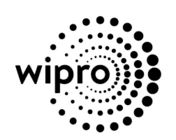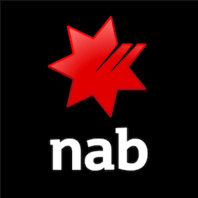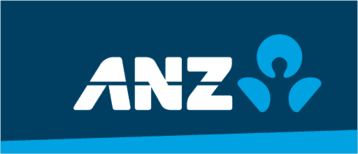

course overview
Overview
This expert-led workshop leads students through the ForgeRock DevOps documentation set to learn how to deploy all of the ForgeRock Identity Platform software components to a Kubernetes cluster running in the Google Kubernetes Environment (GKE). It then explores how you can get started migrating the ForgeRock Entertainment Company (FEC) portal configuration from the core concepts courses to Kubernetes using the DevOps techniques covered in the documentation. This expert-led workshop leads students through the ForgeRock DevOps documentation set to learn how to deploy all of the ForgeRock Identity Platform software components to a Kubernetes cluster running in the Google Kubernetes Environment (GKE). It then explores how you can get started migrating the ForgeRock Entertainment Company (FEC) portal configuration from the core concepts courses to Kubernetes using the DevOps techniques covered in the documentation. This expert-led workshop leads students through the ForgeRock DevOps documentation set to learn how to deploy all of the ForgeRock Identity Platform software components to a Kubernetes cluster running in the Google Kubernetes Environment (GKE). It then explores how you can get started migrating the ForgeRock Entertainment Company (FEC) portal configuration from the core concepts courses to Kubernetes using the DevOps techniques covered in the documentation. Please note that this workshop uses the DevOps documentation set as your reference for the hands-on labs instead of a dedicated Student Workbook as with the core concepts courses. You work with your instructor to improvise any steps that are necessary for the given lab environment. Also, it is important that you have already successfully completed the core concepts courses before attending this workshop, and you have experience working with Kubernetes and Helm. Please note that this workshop uses the DevOps documentation set as your reference for the hands-on labs instead of a dedicated Student Workbook as with the core concepts courses. You work with your instructor to improvise any steps that are necessary for the given lab environment. Also, it is important that you have already successfully completed the core concepts courses before attending this workshop, and you have experience working with Kubernetes and Helm. Please note that this workshop uses the DevOps documentation set as your reference for the hands-on labs instead of a dedicated Student Workbook as with the core concepts courses. You work with your instructor to improvise any steps that are necessary for the given lab environment. Also, it is important that you have already successfully completed the core concepts courses before attending this workshop, and you have experience working with Kubernetes and Helm. Note: Revision A of this course is built on version 6.5.0 of the ForgeRock Identity Platform. Note: Revision A of this course is built on version 6.5.0 of the ForgeRock Identity Platform. Note: Revision A of this course is built on version 6.5.0 of the ForgeRock Identity Platform.
Audience
s
s This workshop is aimed at technical audiences who are responsible for deploying the ForgeRock Identity Platform to Kubernetes and managing the platform as a whole in a Kubernetes environment. This includes, but is not limited to, those with the following responsibilities: This workshop is aimed at technical audiences who are responsible for deploying the ForgeRock Identity Platform to Kubernetes and managing the platform as a whole in a Kubernetes environment. This includes, but is not limited to, those with the following responsibilities: This workshop is aimed at technical audiences who are responsible for deploying the ForgeRock Identity Platform to Kubernetes and managing the platform as a whole in a Kubernetes environment. This includes, but is not limited to, those with the following responsibilities:
Developers who are responsible for deploying and configuring ForgeRock Identity Platform in a DevOps development environment and helping others migrate those deployments to production. Developers who are responsible for deploying and configuring ForgeRock Identity Platform in a DevOps development environment and helping others migrate those deployments to production. Developers who are responsible for deploying and configuring ForgeRock Identity Platform in a DevOps development environment and helping others migrate those deployments to production.
Other technical audiences, such as system integrators, consultants, architects, administrators, and sales/support engineers who need to learn how to deploy the ForgeRock Identity Platform to Kubernetes using DevOps techniques. Other technical audiences, such as system integrators, consultants, architects, administrators, and sales/support engineers who need to learn how to deploy the ForgeRock Identity Platform to Kubernetes using DevOps techniques. Other technical audiences, such as system integrators, consultants, architects, administrators, and sales/support engineers who need to learn how to deploy the ForgeRock Identity Platform to Kubernetes using DevOps techniques.
Skills Gained
Upon completion of this course, you should be able to: Upon completion of this course, you should be able to: Upon completion of this course, you should be able to:
Walk through the instructions in the ForgeRock DevOps Quick Start Guide, DevOps Release Notes, and DevOps Developer's Guide to deploy the ForgeRock Identity Platform to a Kubernetes cluster running in GKE using the default ForgeRock DevOps Examples. Walk through the instructions in the ForgeRock DevOps Quick Start Guide, DevOps Release Notes, and DevOps Developer's Guide to deploy the ForgeRock Identity Platform to a Kubernetes cluster running in GKE using the default ForgeRock DevOps Examples. Walk through the instructions in the ForgeRock DevOps Quick Start Guide, DevOps Release Notes, and DevOps Developer's Guide to deploy the ForgeRock Identity Platform to a Kubernetes cluster running in GKE using the default ForgeRock DevOps Examples.
Use Chapters 4, 5, and 6 of the ForgeRock DevOps Developer's Guide to deploy each of the ForgeRock Identity Platform components with a custom configuration. Note that you will need your own Git repository, such as a free account on GitHub, to work with the ForgeRock Identity Platform component configurations. Use Chapters 4, 5, and 6 of the ForgeRock DevOps Developer's Guide to deploy each of the ForgeRock Identity Platform components with a custom configuration. Note that you will need your own Git repository, such as a free account on GitHub, to work with the ForgeRock Identity Platform component configurations. Use Chapters 4, 5, and 6 of the ForgeRock DevOps Developer's Guide to deploy each of the ForgeRock Identity Platform components with a custom configuration. Note that you will need your own Git repository, such as a free account on GitHub, to work with the ForgeRock Identity Platform component configurations.
Explore how to use the ForgeRock DevOps Cloud Deployment Model Cookbook for GKE (the cookbook) to standardize and simplify the deployment of the ForgeRock Identity Platform in a production-quality Kubernetes cloud environment. Note that this will mainly be a discussion, with a demonstration by your instructor. Explore how to use the ForgeRock DevOps Cloud Deployment Model Cookbook for GKE (the cookbook) to standardize and simplify the deployment of the ForgeRock Identity Platform in a production-quality Kubernetes cloud environment. Note that this will mainly be a discussion, with a demonstration by your instructor. Explore how to use the ForgeRock DevOps Cloud Deployment Model Cookbook for GKE (the cookbook) to standardize and simplify the deployment of the ForgeRock Identity Platform in a production-quality Kubernetes cloud environment. Note that this will mainly be a discussion, with a demonstration by your instructor.
Explore how you can get started migrating the FEC Portal configuration from the ForgeRock University core concepts courses to a Kubernetes environment. You use the techniques learned earlier to start the migration of an existing ForgeRock Identity Platform deployment to Kubernetes. You work with your instructor to discuss the migration challenges and work with the existing FEC Portal deployment available in the lab to implement some of the migration tasks. Explore how you can get started migrating the FEC Portal configuration from the ForgeRock University core concepts courses to a Kubernetes environment. You use the techniques learned earlier to start the migration of an existing ForgeRock Identity Platform deployment to Kubernetes. You work with your instructor to discuss the migration challenges and work with the existing FEC Portal deployment available in the lab to implement some of the migration tasks. Explore how you can get started migrating the FEC Portal configuration from the ForgeRock University core concepts courses to a Kubernetes environment. You use the techniques learned earlier to start the migration of an existing ForgeRock Identity Platform deployment to Kubernetes. You work with your instructor to discuss the migration challenges and work with the existing FEC Portal deployment available in the lab to implement some of the migration tasks. Note that a set of slides is included with the workshop to help you stay on track and provide topics for discussion. Note that a set of slides is included with the workshop to help you stay on track and provide topics for discussion. Note that a set of slides is included with the workshop to help you stay on track and provide topics for discussion.
Prerequisites
The following are the prerequisites for successfully completing this course: The following are the prerequisites for successfully completing this course: The following are the prerequisites for successfully completing this course:
Completion of the ForgeRock University core concept courses (AM-400 Rev B, IDM-400 Rev B, DS-400 Rev A): Completion of the ForgeRock University core concept courses (AM-400 Rev B, IDM-400 Rev B, DS-400 Rev A): Completion of the ForgeRock University core concept courses (AM-400 Rev B, IDM-400 Rev B, DS-400 Rev A):
You should know how to configure and administer ForgeRock Directory Services (DS), ForgeRock Access Management (AM), Amster, ForgeRock Identity Management (IDM), and ForgeRock Identity Gateway (IG). You should know how to configure and administer ForgeRock Directory Services (DS), ForgeRock Access Management (AM), Amster, ForgeRock Identity Management (IDM), and ForgeRock Identity Gateway (IG). You should know how to configure and administer ForgeRock Directory Services (DS), ForgeRock Access Management (AM), Amster, ForgeRock Identity Management (IDM), and ForgeRock Identity Gateway (IG).
You should know how to use the appropriate commands and user interfaces for each component. You should know how to use the appropriate commands and user interfaces for each component. You should know how to use the appropriate commands and user interfaces for each component.
Knowledge and experience working with Linux, Docker, Kubernetes, Helm, GKE, Google Cloud SDK, and GitHub for working with the labs and understanding the DevOps examples. Following are some examples of the knowledge and skills you should have before attending this workshop: Knowledge and experience working with Linux, Docker, Kubernetes, Helm, GKE, Google Cloud SDK, and GitHub for working with the labs and understanding the DevOps examples. Following are some examples of the knowledge and skills you should have before attending this workshop: Knowledge and experience working with Linux, Docker, Kubernetes, Helm, GKE, Google Cloud SDK, and GitHub for working with the labs and understanding the DevOps examples. Following are some examples of the knowledge and skills you should have before attending this workshop:
Run administrator-level commands in a Linux terminal window and understand their output. Run administrator-level commands in a Linux terminal window and understand their output. Run administrator-level commands in a Linux terminal window and understand their output.
Install the various DevOps tools, like Docker, Kubernetes, Helm, and others in a Linux environment. Install the various DevOps tools, like Docker, Kubernetes, Helm, and others in a Linux environment. Install the various DevOps tools, like Docker, Kubernetes, Helm, and others in a Linux environment.
Run various Kubernetes commands to deploy pods, query pods, and query cluster objects. Run various Kubernetes commands to deploy pods, query pods, and query cluster objects. Run various Kubernetes commands to deploy pods, query pods, and query cluster objects.
Use the kubectl command for operating within a cluster, and connect to containers running in the pod for diagnostic purposes. Use the kubectl command for operating within a cluster, and connect to containers running in the pod for diagnostic purposes. Use the kubectl command for operating within a cluster, and connect to containers running in the pod for diagnostic purposes.
Create and install a Helm chart and use the helm command to manage releases Create and install a Helm chart and use the helm command to manage releases Create and install a Helm chart and use the helm command to manage releases
Have a GitHub account and use the Git commands to fork, clone, pull, and push changes to a Git repository. Have a GitHub account and use the Git commands to fork, clone, pull, and push changes to a Git repository. Have a GitHub account and use the Git commands to fork, clone, pull, and push changes to a Git repository. Duration Duration Duration Duration 3 days 3 days 3 days
Outline
If you need training for 3 or more people, you should ask us about onsite training. Putting aside the obvious location benefit, content can be customised to better meet your business objectives and more can be covered than in a public classroom. Its a cost effective option. One on one training can be delivered too, at reasonable rates.
Submit an enquiry from any page on this site, and let us know you are interested in the requirements box, or simply mention it when we contact you.
All $ prices are in USD unless it’s a NZ or AU date
SPVC = Self Paced Virtual Class
LVC = Live Virtual Class
Our clients have included prestigious national organisations such as Oxford University Press, multi-national private corporations such as JP Morgan and HSBC, as well as public sector institutions such as the Department of Defence and the Department of Health.












